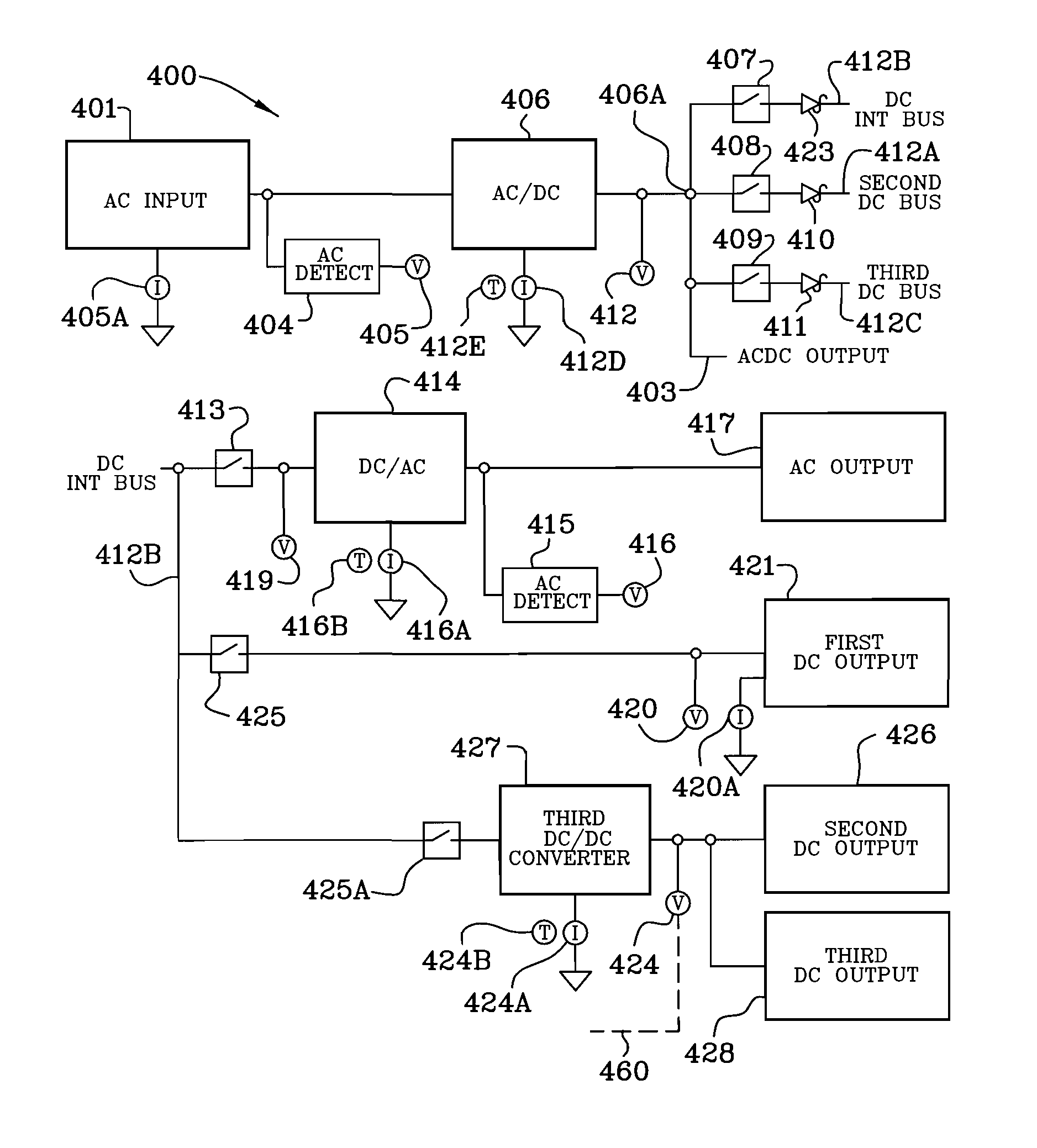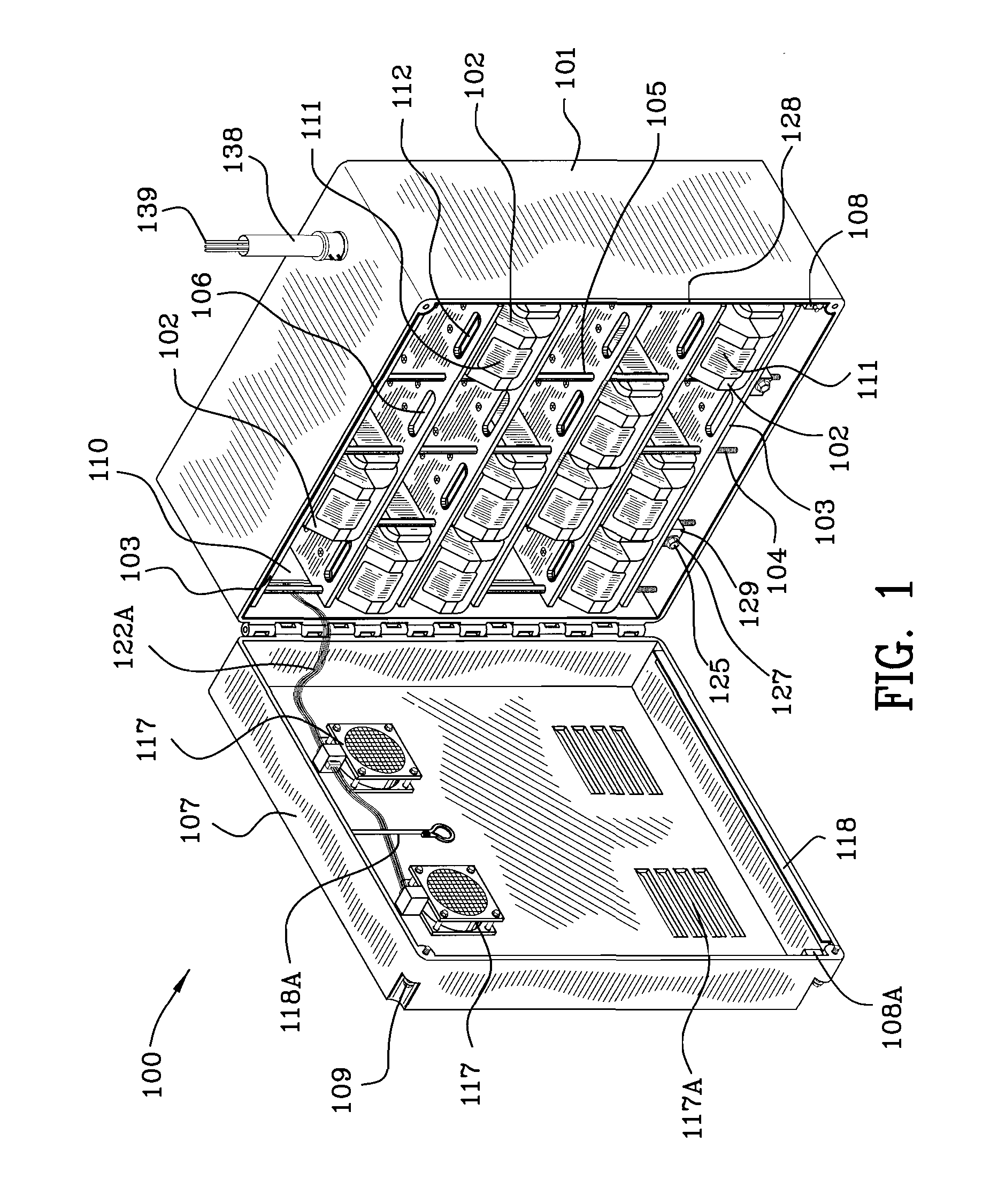Refuelable battery-powered electric vehicle
a battery-powered electric vehicle and rechargeable technology, applied in the direction of electric/hybrid propulsion, propulsion parts, process and machine control, etc., can solve the problems of fast recharge time, increased cost, and increased cost, and achieve the effect of continuous operation of electric vehicles indefinitely
- Summary
- Abstract
- Description
- Claims
- Application Information
AI Technical Summary
Benefits of technology
Problems solved by technology
Method used
Image
Examples
Embodiment Construction
and Claims which follow hereinbelow.
BRIEF DESCRIPTION OF THE DRAWINGS
[0093]FIG. 1 is a front perspective view of the intelligent power supply device illustrating a plurality of removable cartridge energy packs in a rack.
[0094]FIG. 1A is a front perspective view of the intelligent power supply device similar to FIG. 1 without the removable cartridge energy packs in the rack.
[0095]FIG. 1B is a front perspective view of the intelligent power supply device without the rack and without the removable cartridge energy packs in the rack.
[0096]FIG. 1C is a front perspective view of the rack illustrated in FIGS. 1 and 1A.
[0097]FIG. 1D is a front view of the rack partially populated with the removable cartridge energy packs in the rack.
[0098]FIG. 1E is a side view of the rack taken along the lines 1E-1E of FIG. 1D.
[0099]FIG. 1F is a side view of the rack taken along the lines 1F-1F of FIG. 1D.
[0100]FIG. 1G is an enlargement of a portion of FIG. 1D illustrating one of the removable cartridge en...
PUM
| Property | Measurement | Unit |
|---|---|---|
| energy | aaaaa | aaaaa |
| electrical power | aaaaa | aaaaa |
| voltages | aaaaa | aaaaa |
Abstract
Description
Claims
Application Information
 Login to View More
Login to View More - R&D
- Intellectual Property
- Life Sciences
- Materials
- Tech Scout
- Unparalleled Data Quality
- Higher Quality Content
- 60% Fewer Hallucinations
Browse by: Latest US Patents, China's latest patents, Technical Efficacy Thesaurus, Application Domain, Technology Topic, Popular Technical Reports.
© 2025 PatSnap. All rights reserved.Legal|Privacy policy|Modern Slavery Act Transparency Statement|Sitemap|About US| Contact US: help@patsnap.com



